Colourful history of Adelaide’s student ‘raggers’ on show
From a horse-drawn ‘float’ lampooning radioactivity researchers in 1905 to the suspension of an FJ Holden over University Footbridge in 1971, more than 100 years of student pranks and protests are highlighted in a new Adelaide University exhibition.
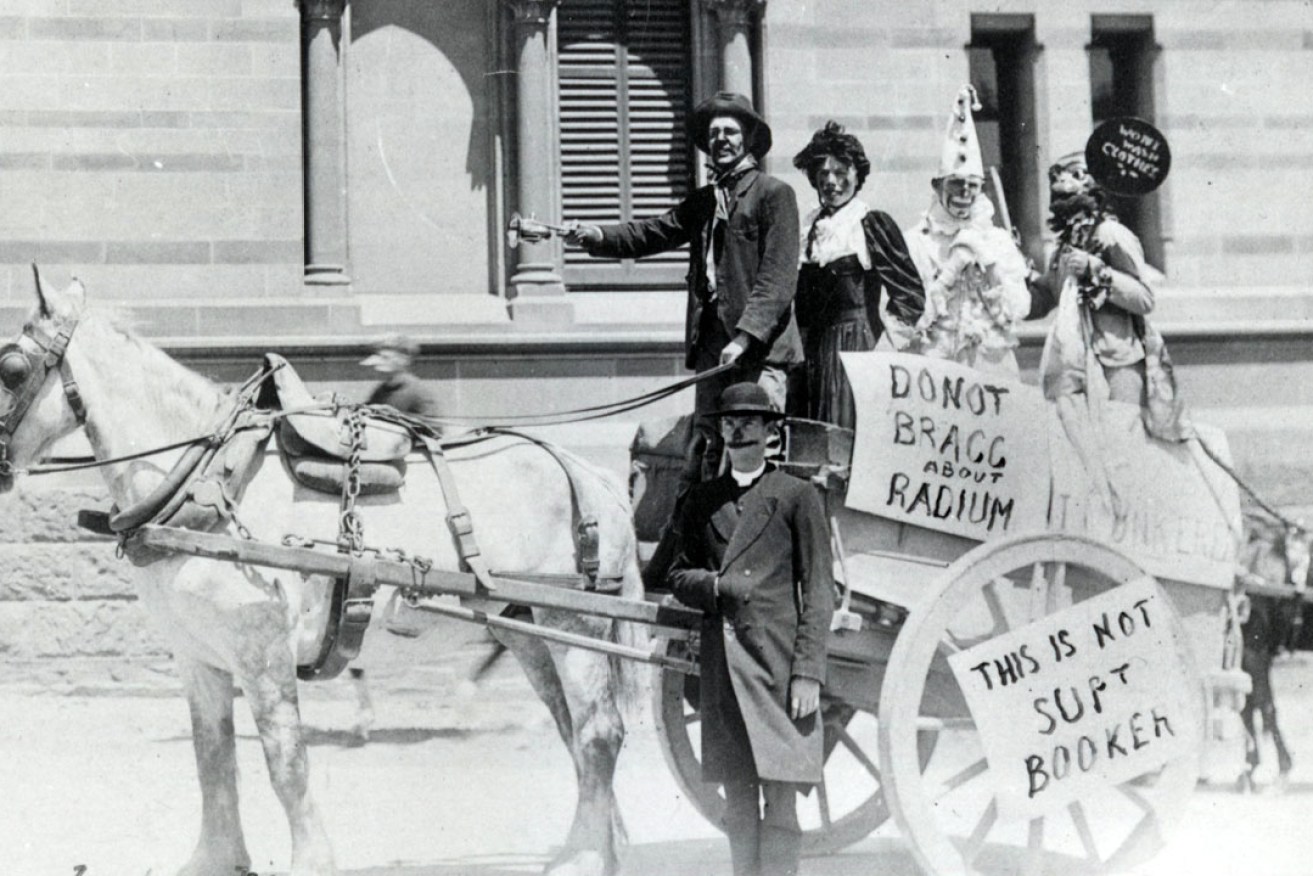
A photo of a 1905 Prosh float from the Raggers & Radicals exhibition.
Raggers and Radicals: Student Activity and Activism from 1880 is on display on level one of the Barr Smith Library from today until June 30 and features a wide selection of archival material including photos, cartoons and posters.
“Students have always been inclined to be a bit high-spirited,” says exhibition curator and special collections librarian Cheryl Hoskin.
“In the very early days they would let off steam after exams by interrupting graduation ceremonies with pranks, lampooning songs, catcalls and whistles. During the 1896 ceremony they set alarm clocks to go off at five-minute intervals.
“The people of Adelaide would also flock to the student processions and the later Prosh parades to join in the fun.”
“Ragging”, described as noisy disorderly conduct in defiance of authority, was a tradition the early Adelaide University students inherited from their counterparts in Britain.
In 1905, a public entertainment element was introduced with organised processions of satirical “tableaus” through the streets of Adelaide. The students in the procession (or “Prosh”, as they became known) image at the top of this article are believed to be referencing research into radioactivity by William Henry Bragg and his son Lawrence.
At various times over the years the processions and accompanying concerts were stopped, including during both world wars, but by the 1950s and ’60s they were back, with Procession Day marches featuring 30 or more floats and attracting thousands of onlookers. One Prosh stunts saw female dummies placed on the Elder Hall spire.
“The floats, along with the Prosh rag published from 1954, often veered into questionable taste of giant phalluses and sexual innuendo, while exuberant student rowdiness approached larrikinism with smoke bombs, theft of road signs, and vandalising of street lights,” says an article on the university website.
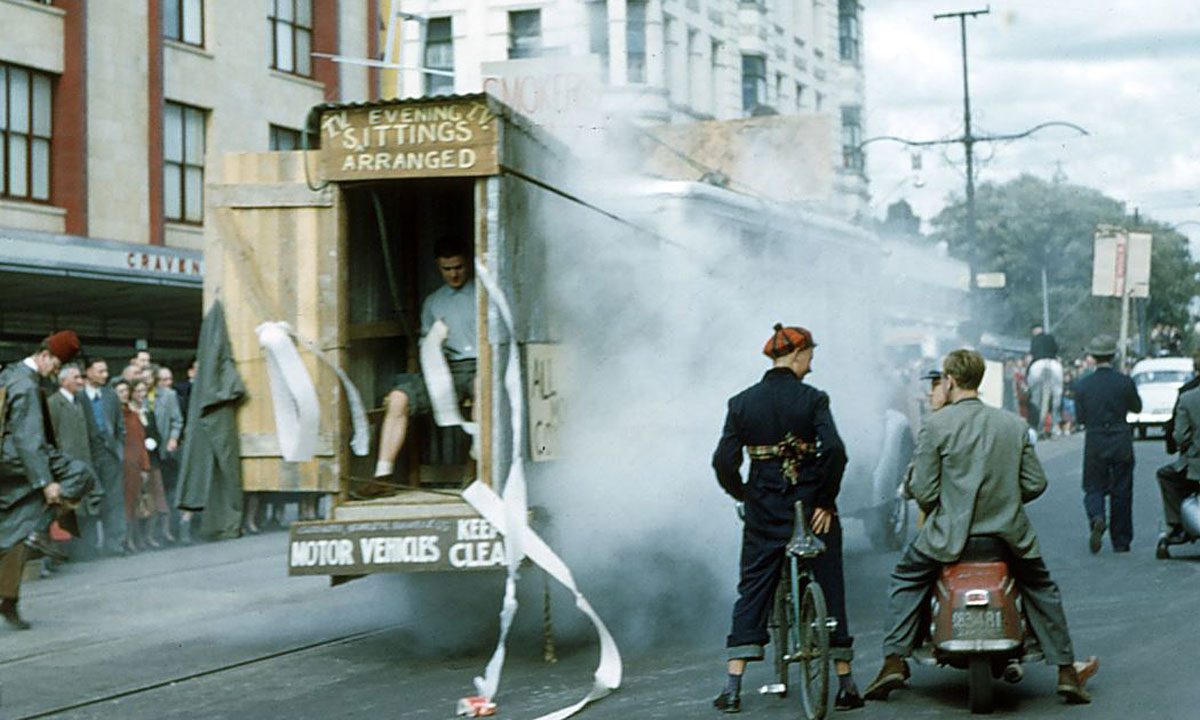
A toilet float and smoke bombs in the Prosh parade of 1959.
Things got more serious around the late 1960s, a time of increased student radicalism worldwide. In Adelaide, student protests targeted issues such as the Vietnam War, racism, nuclear war and Aboriginal rights.
“1968 to 1972 were the most fervent years of protest at Adelaide,” Hoskin says.
“Students were no longer satisfied with having their requests considered. They demanded that their rights be recognised and injustices corrected. They wanted action – now!”
Working on Raggers and Radicals has been a personal journey for the curator, who was herself a student on campus in the ’70s. Hoskin describes the time as one of great camaraderie, when students would gather on the Barr Smith lawns to discuss issues.
“We all felt that we could achieve anything.”
Student activism has dropped off significantly in more recent decades, with the most common target of protests in the noughties being increases in student fees and cuts to university funding.
Raggers and Radicals: Student Activity and Activism from 1880, is on level one of the Barr Smith Library until June 30.
Photos from Ragger and Radicals:
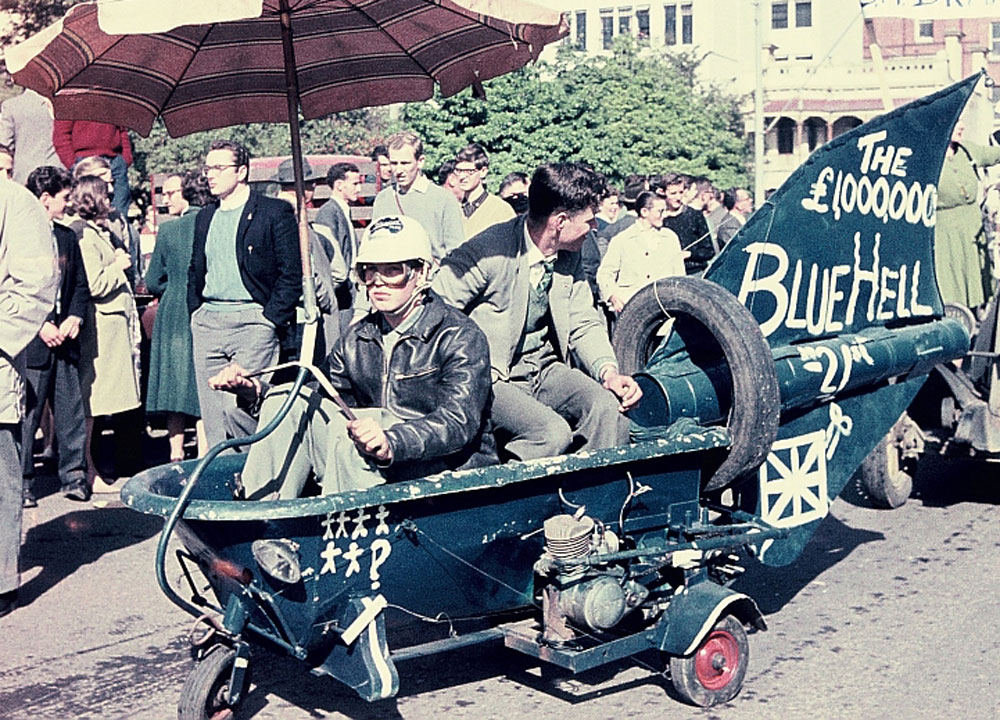
A bathtub float by mechanical engineering student Keith Weller, a parody of the Bluebird car which broke the land-speed record vehicle on the Lake Eyre salt pans in 1964.
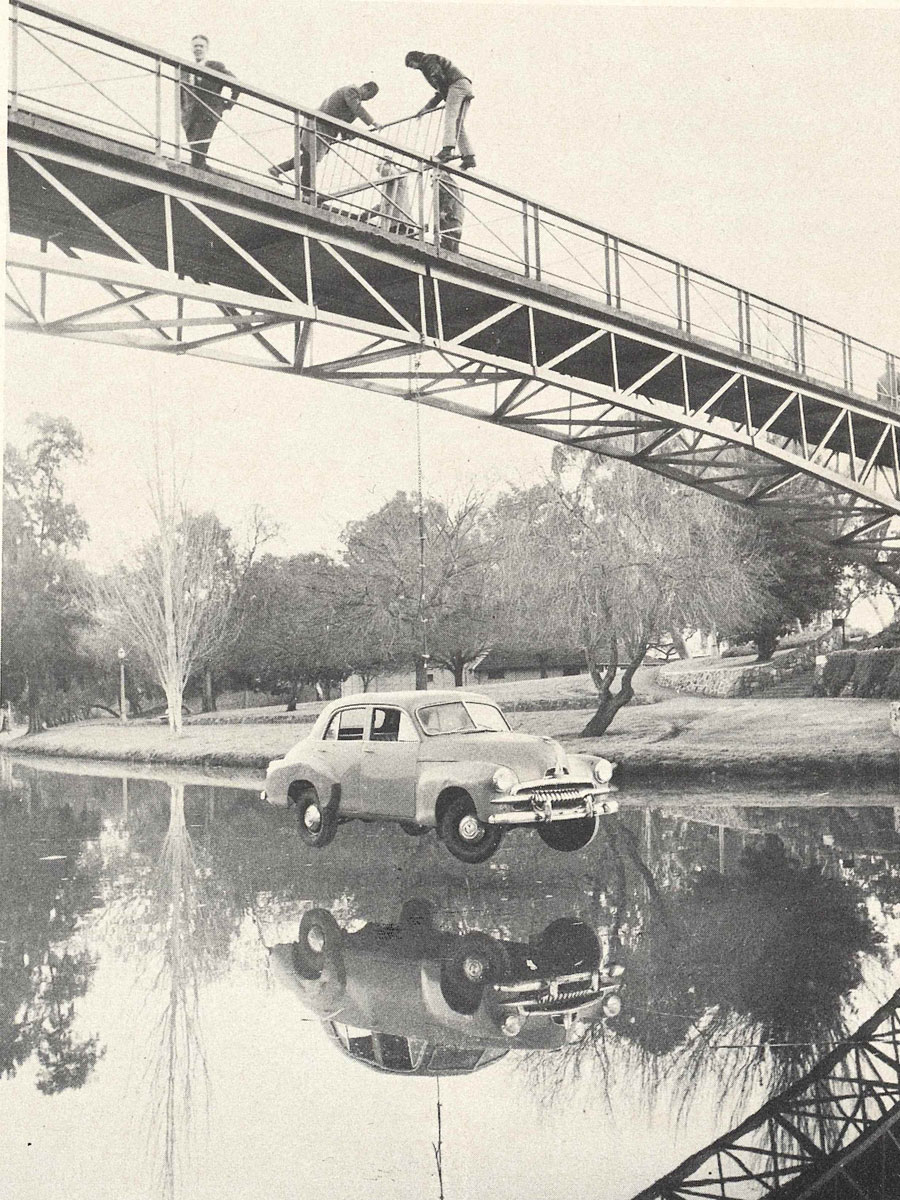
One of the most infamous Prosh pranks occurred in 1973, when engineering students suspended an FJ Holden underneath the University Footbridge.
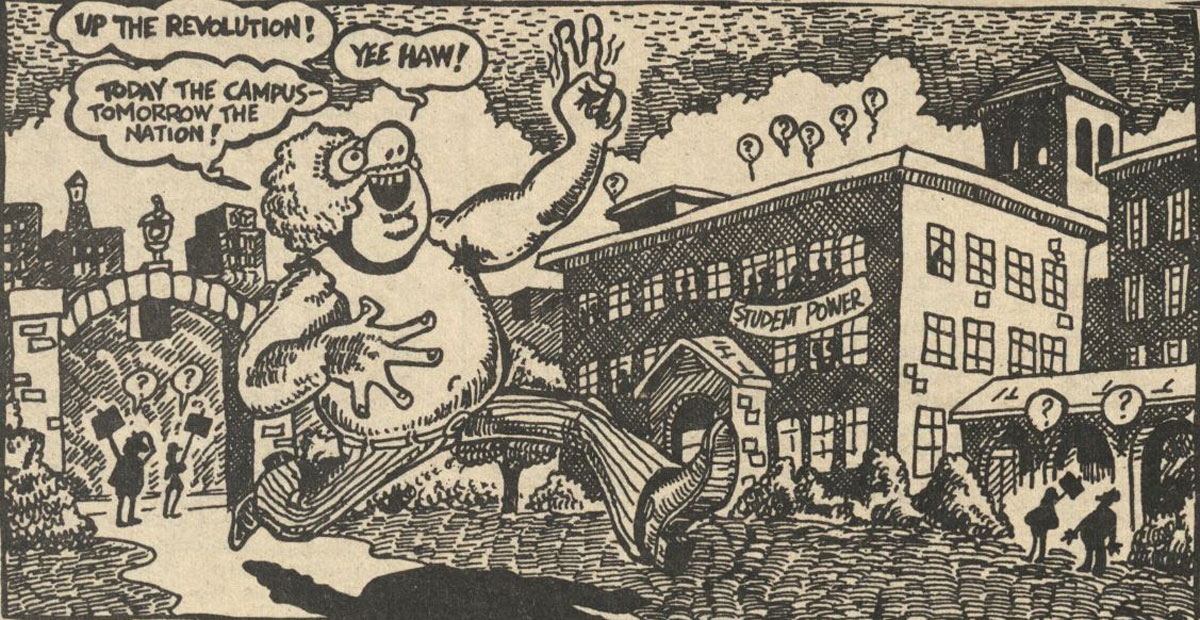
A cartoon from the Adelaide University student magazine On Dit.
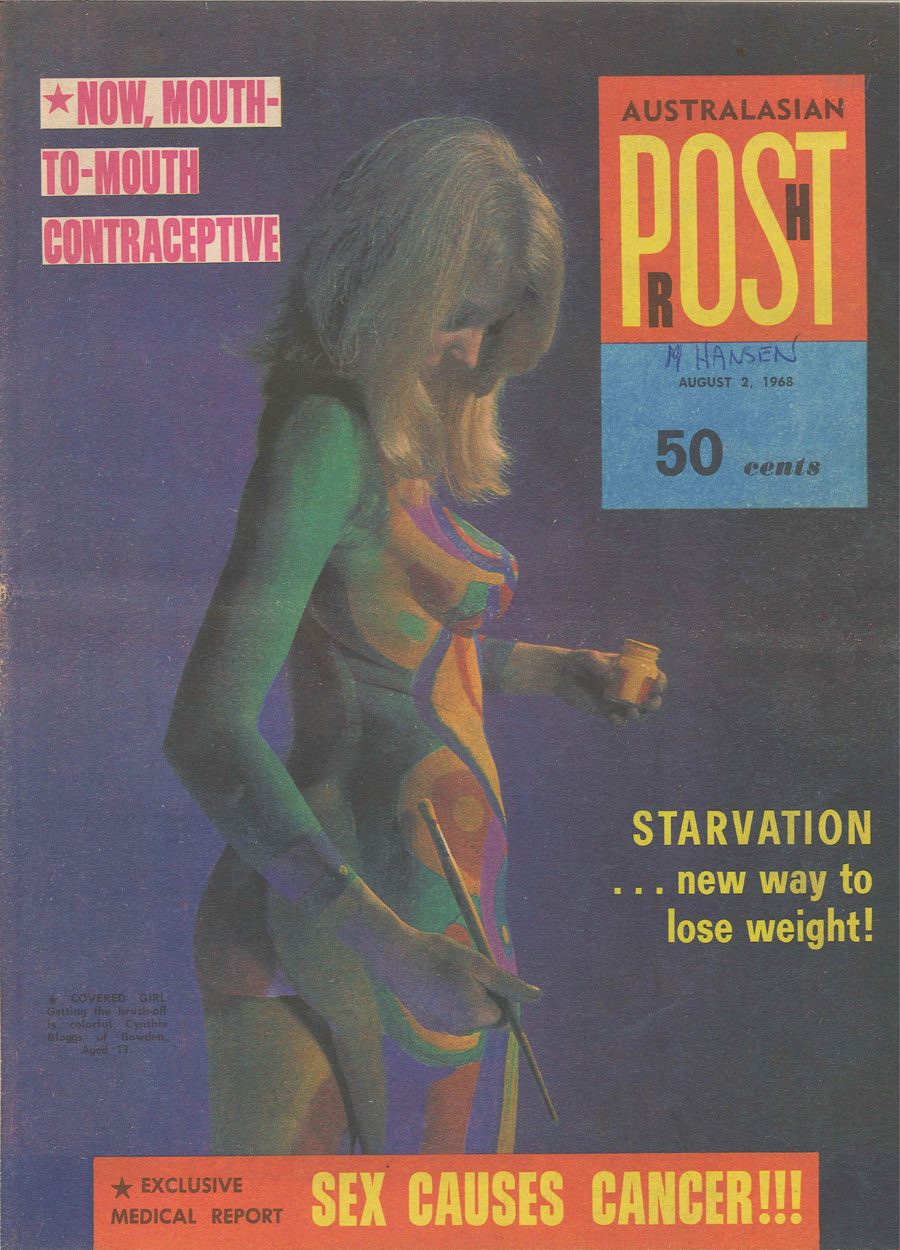
The cover of the Prosh rag in 1968.




